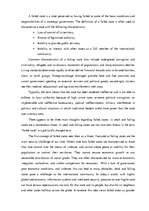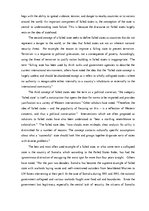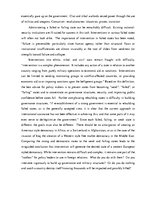Based on this definition, the best advice for policy makers is to prevent states from becoming “weak”, “failed”, or “failing” states and to concentrate on governance structures, security, and improving public confidence before states fail. Further complicating rebuilding states is difficulty in building governance structures, “if re-establishment of a strong government is essential to rebuilding failed states, as is the generally accepted view, it is clear that the current approach to international assistance has not been effective in achieving this, and that some parts of it may even serve to de-legitimize the government.” Since each failed, failing, or weak state is different, the goals must also be different. There should be no anticipation of creating an American style democracy in Africa, or a Switzerland in Afghanistan; or as in the case of the invasion of Iraq the creation of a Western style free market democracy in the Middle East. Comparing the strong and democratic states to the weak and failing states leads to the misguided conclusion that intervention will generate the desired state of a western European styled democracy. While intervention remains difficult and complex, it remains one part of the “toolbox” for policy leaders to use in foreign relations. What do you do with them? Do you intervene vigorously to build up governance and military structures? Or do you do nothing and watch a country destroy itself knowing thousands will be impacted and possibly killed? …





